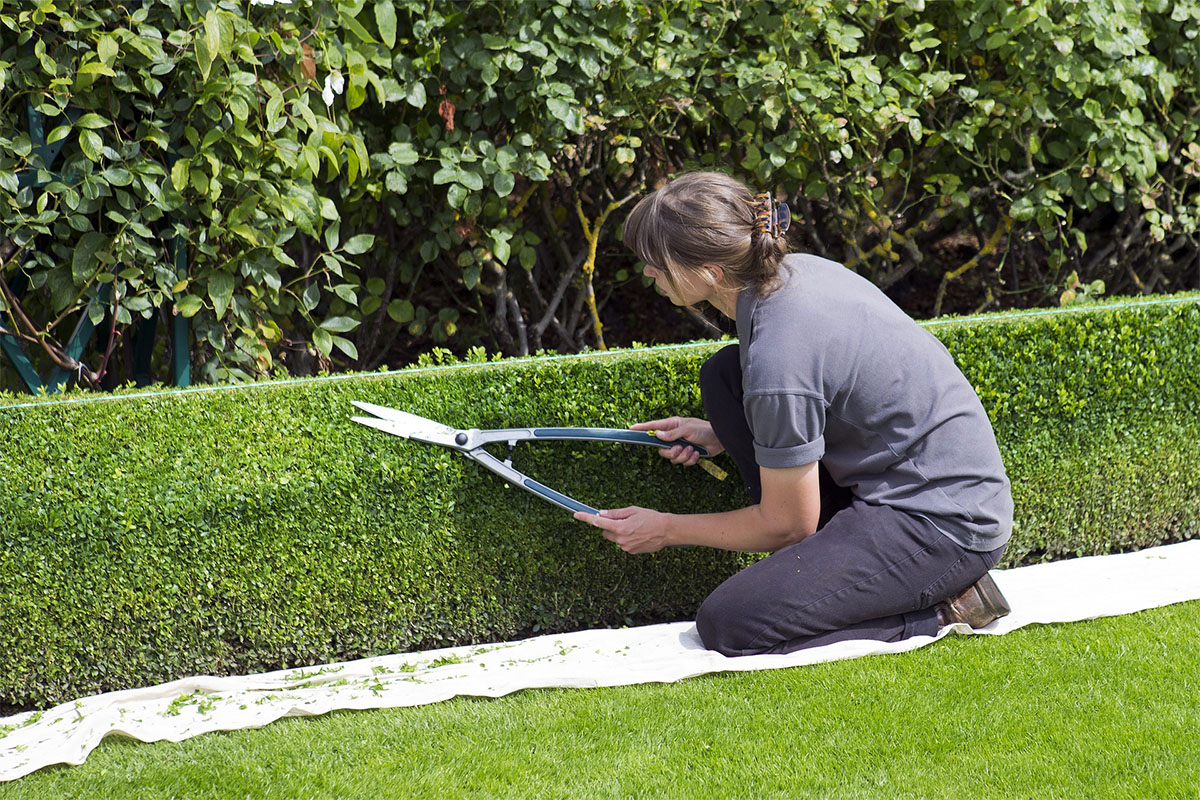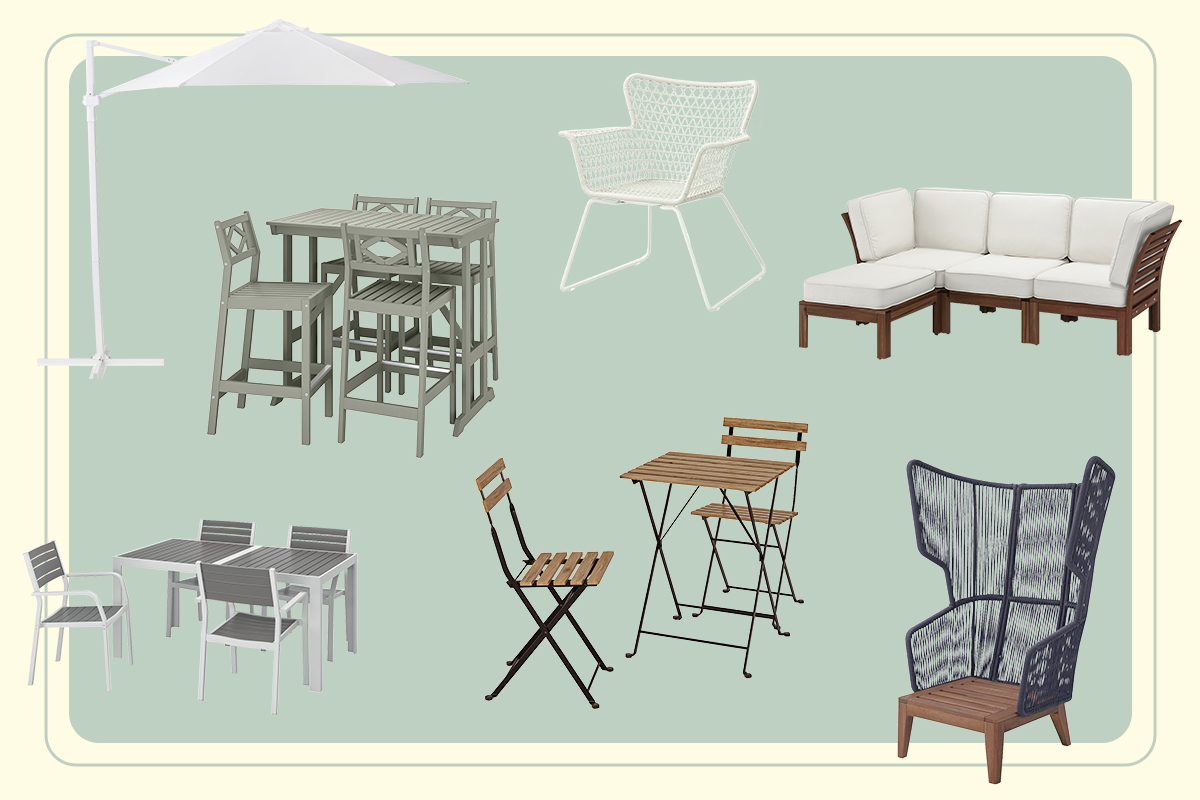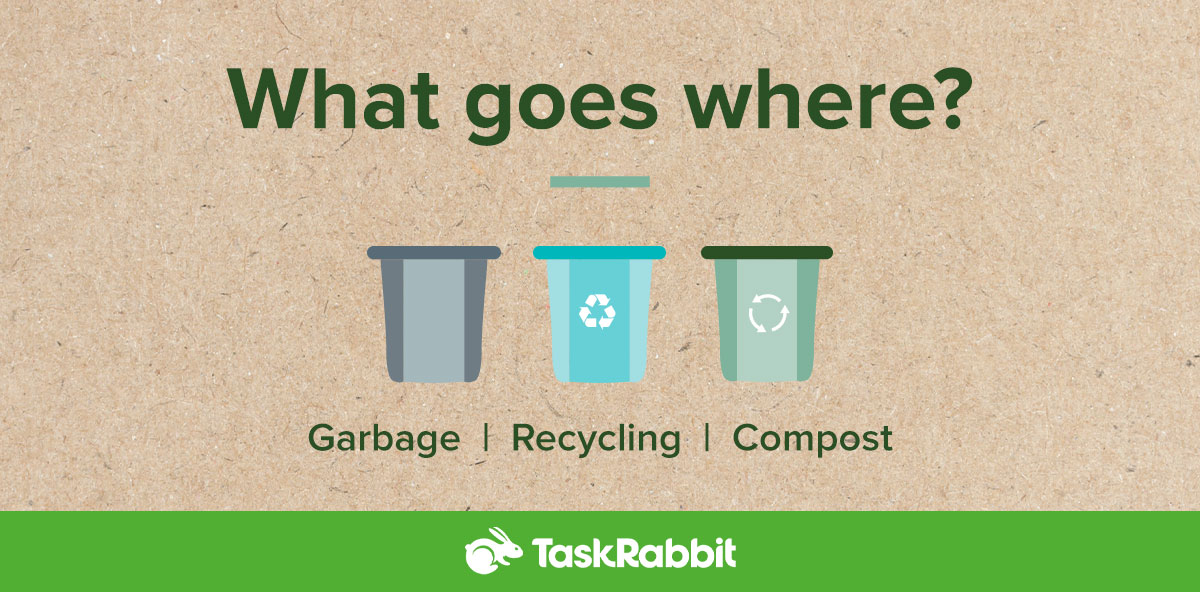Steps for Trimming Hedges

Whether you need to know how to trim boxwoods, how to trim shrubs, or how to trim tall hedges, there are a few general steps you should follow when trimming:
1. Start by laying down a tarp to collect trimmings and make cleanup a breeze.
2. Next, set up a pair of stakes on both sides of your shrubs with a string or rope between them at the height you want to cut your hedge down.
3. Use trimmers or shears to cut the plants to your desired height above the string. Then trim the sides from the bottom up. For many hedge varieties, you’ll want to ensure the top is narrower than the base. Keep the sides of your hedge 6-12 inches away from your house. For trimming tall hedges, you might need a ladder.
4. Inspect the plant for dead branches and remove them. If there are many overgrown branches, trim from inside the plant to thin it out, but don’t remove more than 1/3 of your shrub.
5. Clean up by gathering your tarp and dispose of the hedge trimmings.

What Tools Do I Need to Trim My Hedges?
When trimming hedges, you’ll need a few tools to get the job done properly.
Hedge trimmers: Choose between electric, gas-powered, and/or hedge shears.
- Electric trimmers come in corded or cordless varieties. Corded will last longer, but cordless are usually easier to use since you can take them anywhere.
- Gas-powered trimmers are the most powerful option, trimming at the fastest rate. This is a good option for large areas.
- Hedge shears look like large scissors and give the most control over cutting, ideal for meticulous designs.
A string line or rope: Have a line or rope on hand to help you keep your cuts straight.
Tarp or cardboard: Catch trimmings with a tarp or cardboard for easy disposal.

What Are the Different Types of Hedges?
There are many types of hedges, the main groups being evergreen, deciduous, and flowering. Each type has its unique characteristics and purposes.
Evergreen Hedges
Evergreen hedges are a great option for landscaping because they stay green all year long, providing color and structure to your yard. They also offer privacy and protection from winds that can damage delicate plants.
Popular types of evergreen hedges include:
- Boxwoods: Boxwoods are deer-resistant and stay green all year round. They’re considered slow-growing, so you won’t need to trim too much. A trim with shears in the late spring will keep them well-maintained.
- Conifers: Not all conifers are evergreens, but many are. The word conifer means “cone-bearer”—conifers use cones to host their seeds instead of flowers. Arborvitae shrubs are very popular conifer evergreen hedge types, but they’re more high-maintenance than boxwoods, requiring frequent trimming. For a conifer that requires less frequent trimming, try yew.
Deciduous Hedges
Deciduous hedges lose their leaves seasonally (and also change color in the fall), but they’re more forgiving than an evergreen hedge if you neglect regular pruning. They’re also great at filtering wind, even in winter. A prevalent type of deciduous hedge is beech, known for its gorgeous, rich color in autumn.
Flowering Hedges
If you love flowers, the good news is there are certain kinds you can turn into a hedge! For example, the Rose of Sharon blooms pink or purple flowers continuously from midsummer to fall and makes an excellent hedge. Weigela is a great flowering hedge option.
When Do I Trim My Hedges?
The primary thing you need to consider is the type of hedge that you have. Different hedges grow at different rates, so you must adjust your trimming schedule accordingly.
- Non-flowering hedges: These need to be trimmed more during the primary growing season (every 6-8 weeks) and require less maintenance in the off months. Boxwood hedges and arborvitae fall into this category.
- Flowering hedges: It depends on your plant type, but these generally need to be trimmed seasonally after most of the growth has occurred for the year. Spring-flowering hedges generally need to be cut right after blooming. You can trim summer-flowering hedges later in the year, in the late winter, or in early spring. Your climate matters, too. For example, in warmer climates, it’s often best to trim hedges in late spring or early summer before the hottest days of the year arrive. This prevents the hedge from suffering heat stress, which can cause damage or even death.
- New hedges: Until your new plants fully mature, you’ll need to trim them regularly.
Of course, you also need to consider the overall appearance of the hedge. You must trim more frequently if you want a neat and tidy appearance. But if you’re going for a more natural look, you can afford to let the hedge grow a bit longer between trimmings. Ultimately, it’s up to you how often you trim your hedges and what look you’re going for.

How to Shape Shrubs and Bushes
Want to know how to trim bushes into any shape? It’s completely possible, but you’ll make it a lot easier on yourself by choosing a shape that works with your plant’s natural growth pattern. If your plant already has a rectangular shape, you may want to trim it in that shape. Plants without much growth at the base make great round plants, and boxwoods are ideal for more advanced shapes like spirals. Here’s how to cut each.
Square/Rectangular: Use lawn stakes to mark around the four corners of your hedge. Decide how tall and wide you want your plant, then tie a string on the stakes at your desired height. Connect all four stakes at your desired level, then use the string as a guide to cut straight lines in a square or rectangle.
Round: The best plants for a round shape are sparse at the bottom. You won’t be able to use strings to create a round shape so you’ll need to use your eye to find the right form! Handheld pruning shears will give you the most control possible. Start three inches from the top of your hedge and step back every few inches to ensure you’re cutting the right shape!
Spiral: First, cut your hedge into a cone shape with trimmers. Then place a string where you want the spiral to sit to use as a guide for when you’re shaping. Work up from the base, holding the shears at an angle, and cut below the string to create a spiral.
You can shape your hedges and bushes into whatever you want, but if the process seems too overwhelming or you don’t trust your hedge-trimming skills, you can charge a Tasker with this and any other Yard Work tasks.
Last updated on January 11, 2023 by Matt Beier

























